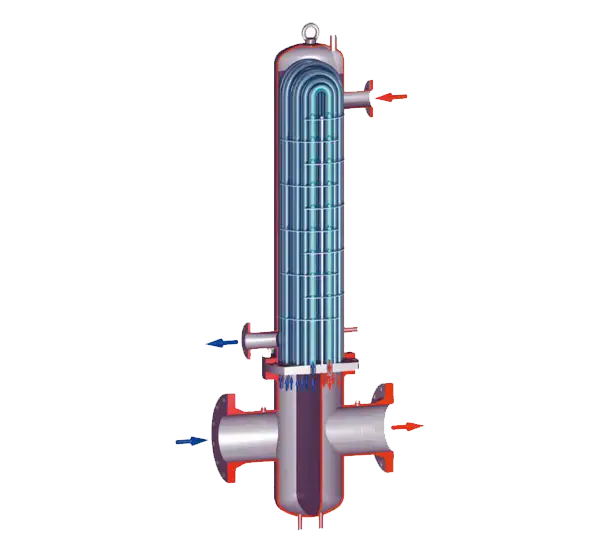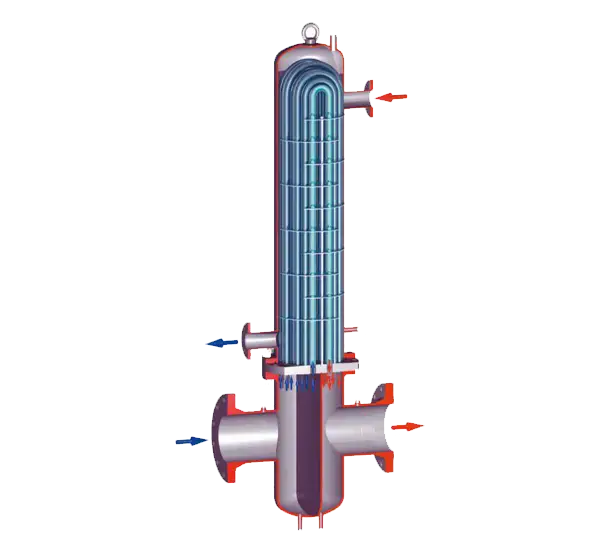Heat Exchanger RMS-A
Type Natural Gas Stations


Heat Exchanger RMS-A Type Natural Gas Stations
Gas Heating Process and Use of Pipe-Type Heat Exchangers in RMS-A Type Facilities
RMS-A type natural gas facilities constitute critical infrastructure in which high-pressure gas is reduced in a controlled environment to facilitate safe delivery to end users. Prior to the execution of the pressure reduction process in these facilities, it is a mandatory operational requirement to subject the gas to a heating procedure. The fundamental rationale for this requirement is the significant temperature drop that occurs during pressure reduction, which may result in frost formation and pose a risk of mechanical damage to station components.
Legal Basis for Gas Heating
As the pressure differential between the gas inlet and outlet points increases, the temperature of the gas correspondingly declines, a thermodynamic phenomenon known as the Joule-Thomson effect. This temperature reduction may cause the water vapour present in the gas stream to condense and crystallise into ice. The formation of such ice particles can adversely affect or render inoperative critical components such as regulators, valves, metering devices, and safety mechanisms, thereby potentially compromising the integrity of the entire system.
Implementation of Pipe-Type Heat Exchangers
To mitigate this risk, pipe-type heat exchangers are integrated into RMS-A type facilities. These units serve to elevate the temperature of the gas prior to pressure regulation, thereby compensating for thermal losses and preserving system stability. The design and engineering calculations of these heat exchangers are specifically based on the principles of the Joule-Thomson effect to ensure their efficacy under operational conditions.
Manufacturing Standards and Regulatory Compliance
All heat exchanger units are manufactured in strict adherence to globally recognised engineering and safety standards. Specifically, the design, fabrication, and testing processes conform to the provisions of ASME Section VIII, Division 1. Compliance with these standards guarantees structural integrity, operational reliability, and long-term performance in accordance with legal and technical obligations.
| Feature | Symbol | Value |
|---|---|---|
| Gas Inlet Pressure | — | 35 - 75 bar |
| Gas Outlet Pressure | — | 12 - 19 bar |
| Gas Inlet Temperature | — | 0 °C |
| Gas Outlet Temperature | — | 10 °C |
 Türkçe
Türkçe